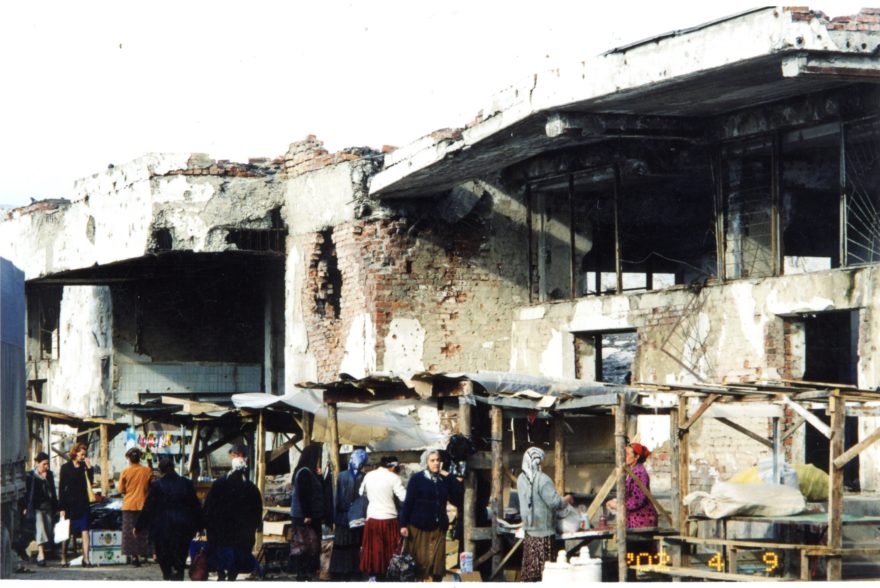What we do:
- Collect evidence of human rights violations and war crimes and store it in the I-DOC database
- Analyse the material with our legal and contextual expertise
- Provide fact-based, verified information to stake holders involved in diplomatic and political negotiations
- Provide case files on suspects to states and international institutions so they can prosecute or sanction perpetrators
- Cooperate with local partners, build capacity and share recommendations
The vast amount of war crimes and human rights violations taking place in Ukraine since Russia’s occupation of Crimea in 2014 and the full–scale invasion in 2022 have alerted the world to the dangers when war criminals are not held accountable for their crimes – so–called impunity.
The NHC’s Documentation and Accountability Hub coordinates documentation of war crimes and human rights violations in Ukraine:
- Recruiting and training local analysts and supervisors to operate I-DOC.
- Supporting and building capacity with local partners to gather evidence.
- Analysing data in the I-DOC database to build cases for criminal investigations or sanctions.
- Liaising with stakeholders to ensure decisions are based on verified facts from the database and Ukrainian contributions
- Applying a fact-based approach centred around victims’ experiences while ensuring no harm is done.
- Key findings inform investigations or reports on significant incidents such as the horrors during the occupation of Bucha, the systematic use of torture in the Russian base in Balakliia, and the explosion of the dam in Nova Kakhovka.
In these projects, we co–operate with the CILRAP’s Case Matrix Network (CMN) on an online Database – IDOC. The IDOC ensures the efficient processing of large amounts of information through the utilisation of effective documentation methods.
CURRENTLY: We are scaling up operations to enhance the collection, analysis, and sharing of data on war crimes and human rights violations in Ukraine at a crucial time. We will do this through improved digital solutions that facilitate faster data collection and distribution of findings. We welcome any contributions to the cause.
Ukraine
Already in 2014, when Russia invaded Ukraine, the NHC was ready to hit the ground running, offer relevant help and share our NEDC’s experience with Ukrainian actors documenting the atrocities.
By starting to co-operate with a local human rights organisation – Truth Hounds and the Ukrainian Attorney General of Crimea, we expanded our documentation work to cover the Crimean Peninsula and the occupied areas of Eastern Ukraine.
Since the full-scale invasion of Ukraine on February 24, 2022 the NHC together with Truth Hounds and the CMN established a cooperation with the Ukraine 5 AM Coalition (consisting of 30 human rights initiatives and NGOs) and expanded the documentation work to the entire country.
With the support from the public, the Norwegian government and other public or private actors we provide our partners with the necessary software and methodology that has a key role in collecting and systematizing evidence from the ground in Ukraine. In the initial phase, we also provided equipment to carry out documentation in the field (cars, bulletproof vests, helmets and etc.).
Crimea and Ukraine war
2014 – Annexation of Crimea and armed conflict in Donetsk and Luhansk
24.02.2022 – Full-scale invasion of Ukraine by Russia
The IDOC Database contains thousands of materials such as documents, video and audio files, analysed profiles of victims and systemised incidents, and the number keeps growing.

NEDC’s Legacy
DAH’s history dates to 2010 when the Norwegian Helsinki Committee, together with 8 leading international and Russian organisations, established The Natalia Estemirova Documentation Center. Back then, it was hard to foresee that our methodology and experience with documenting gross violations committed during the armed conflicts in Chechnya, would expand and become a general tool used by many local organisations to document atrocities in their respective countries – including Ukraine.
Over the span of the last 13 years, the NEDC has become the world’s largest digital archive of human rights documentation (with more than one million materials and documents) about armed conflicts and international crimes in Chechnya and the North Caucasus.
The name of the Center refers to and aspire to honor our brave colleague and friend – Natalia Estemirova, who was head of Memorial’s office in Groznyy, Chechnya. She was abducted in the Chechen Republic and killed on 15 July 2009 because of her persistent efforts to document grave violations during the second armed conflict in Chechnya.
In 2019, the Center started sharing information with the public in Russian and English on its website www.nedc-nhc.org. The website contains audio materials – stories told by victims or their family members – in addition to photos and descriptions of the gravest and most widespread violations.

Documentation in Chechnya
First armed conflict in Chechnya – 11.01.1994 – 31.08.1996.
Second armed conflict in Chechnya – 01.10.1999 – 16.04.2009 according to Russian version / However, main Chechen armed groups left Chechnya in the end of 2014 (and hostilities continue).
The NEDC includes (as of September 2023):
- Materials stored in the archive: over one million files such as documents, video and audio materials.
- Registered and analysed Documents in the IDOC – over 52 600 (mostly related to the second armed conflict).
- 86 700 analysed profiles of victims.
- 7 700 systematised incidents.
Three gravest and widespread human rights violations according to the analysis*:
- Killings – 7 506 verified victims.
- Enforced Disappearances – 6 407 verified victims.
- Torture – 3 489 verified victims.
* These numbers cover only collected and already analysed information. The real number of violations is significantly higher.

Belarus
In 2020, following the mass-protests against the Lukashenko regime in the wake of the presidential election, the NHC intensified its work and documentation efforts in Belarus.
In order to address unlawful arrests, persecution, torture and other mass violations of human rights, together with the local initiative we started to collect and safekeep information about the mass violations.
These efforts are currently ongoing.
Contact us
Employee

